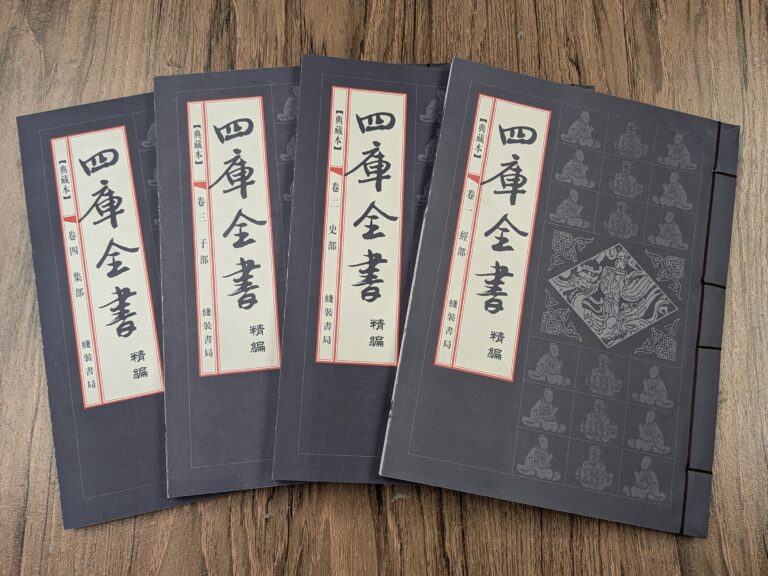
posted 9/23/2024
四庫全書
“四庫全書”是由清朝乾隆皇帝三十八年 (1772) 開始編修,歷時十一年直至乾隆四十六年 (1783) 完成。“四庫全書”是中國最大的叢書,而且是保全最好的古書。乾隆皇帝在這十一年間曾多次下詔命令各省官員收集官方及民間各種書籍,並不惜重金搜購私人藏書,然後動員四千多人主管纂修,校對,協勘,繕寫,鑑定,製造等職位。
“四庫全書”分為四部,即是 「經」,「史」,「子」,「集」。「經」是經書,包括詩經,禮記,春秋,易經,孝經等,都是綜合儒家各種研究相關著作。「史」是包括史書,傳記,地理,制度,軍政等科目。「子」是包括兵法,醫卜,天文術數,藝術,器物,草木蟲獸,食物等項目。「集」是包括詩,詞,曲,文等作品。“四庫全書”原版有79337 卷,約9.97億字。但是乾隆皇帝本人曾經禁毀很多野史筆記,加上後來歷代的改易,重編,現存的版本已經面目全非。
“四庫全書”一共製作了七套,其中四套被毀於太平天國及八國聯軍之亂。剩下三套一套現藏台北國立故宮博物院,一套藏於蘭州甘肅省圖書館,一套在北京中國國家圖書館。
華光擁有的是“四庫全書精編”。即是編者選出「經」,「史」,「子」,「集」裏最具代表性的文章而編成。“四庫全書精編”沒有編號,讀者要閱讀請向當值的義工詢問。
SiKuQuanShu
The “SiKuQuanShu” was compiled in the thirty-eighth year of Emperor Qianlong of the Qing Dynasty (1772) and lasted eleven years until it was completed in the forty-sixth year of Qianlong’s reign (1783). “SiKuQuanShu” is the largest book series in China and the best-preserved ancient book. During these eleven years, Emperor Qianlong issued many edicts and ordered provincial officials to collect various official and private books, and spent large amounts of money to purchase private collections. He then mobilized more than 4,000 officials to take charge of compilation, proofreading, collation, rewriting, appraisal, and production.
“SiKuQuanShu” is divided into four parts, namely “Jing”, “Shi”, “Zi” and “Ji”. “Jing” refers to classics, including Shi Jing, Li Ji, Chun Qiu, Yi Jing, and the Xiao Jing etc., which are all comprehensive works related to various studies on Confucianism. “Shi” includes history books, biographies, geography, institutions, military affairs and other subjects. “Zi” includes items such as military art, medical divination, astronomy, art, utensils, vegetation, insects, animals, and food. “Ji” includes poems, lyrics, music, articles and other works. The original version of “SiKuQuanShu” has 79,337 volumes and about 997 million words. However, Emperor Qianlong himself banned many unofficial history notes and inappropriate works, and with subsequent changes and re-editing in the following dynasties, the existing version has been completely changed.
A total of seven sets of “SiKuQuanShu” were produced, four of which were destroyed by the Taiping Rebellion and the Eight-Power Allied Forces invaision of Beijing. Of the remaining three sets one is in the National Palace Museum in Taipei, one is in the Gansu Provincial Library in Lanzhou, and the third is in the National Library of China in Beijing.
What HuaKuang owns is the “Essence of SikuQuanShu”. That is to say, the editors selected the most representative articles from “Jing”, “Shi”, “Zi”, and “Ji”. “Essence of SikuQuanShu” does not have a catalog code. Readers who want to read it should ask the volunteers on duty.